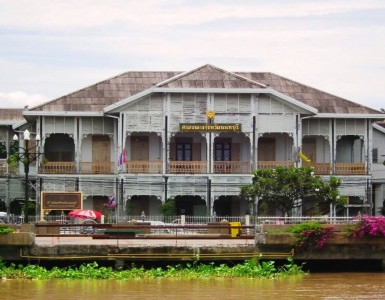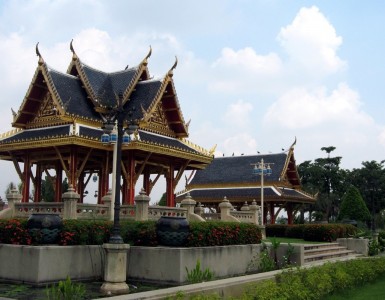Novotel Bangkok IMPACT - Family & Business trip hotel - Yaowarat Temples and Shrine
Yaowarat Temples and Shrine
Chinatown’s Yaowarat temples and shrine are always busy, but best during festival times, when they are jammed with worshippers making merit. Chinese New Year is one of the best times, as is the Vegetarian Festival. The top draws in the neighborhood are beautiful Wat Traimit as well as Wat Mangkon Kamalawat, the former being better at any time, the latter for festivals.
Wat Traimit – Located at the end of Chinatown’s Yaowarat Road, Wat Traimit houses the world’s largest massive gold seated Buddha measuring nearly five metres in height and weighing five and a half tons. In the past, artisans crafted the Buddhas in gold and disguised them from invading armies by a covering of stucco and plaster.
Wat Mangkon Kamalawat – Known in Chinese as Wat Leng Noei Yi (not to be confused with Wat Leng Noei Yi 2 located in Nonthaburi), the temple is the center of festivities during festivals such as Chinese new years and the vegetarian festival. The temple is accessible through a passageway from the main road. It is an old and picturesque Chinese structure with dragon adorned roofs. Walking in, you will be bathed in a cloud of incense and smoke, the spirituality is palpable. The temple is a labyrinth of courtyards and passages connecting various alters to Buddha as well as Taoist deities.
The Guan Yin Shrine is a hidden jewel, often unlisted in most guidebooks. It is one of Chinatown’s most colorful attractions. Guan Yin is the Chinese Goddess of Mercy, and her 900 year old statue stands on the altar inside the shrine. Thousands of locals come to pray daily, especially during holiday periods and special celebrations. The shrine is part of the Thien Fah Foundation, which is Bangkok’s oldest charity group, an organization providing free medical care to the poor and homeless.
For more information about how to get to YAOWARAT TEMPLES & SHRINE, please do not hesitate to contact our concierge.
Address:
Chinatown, Bangkok




